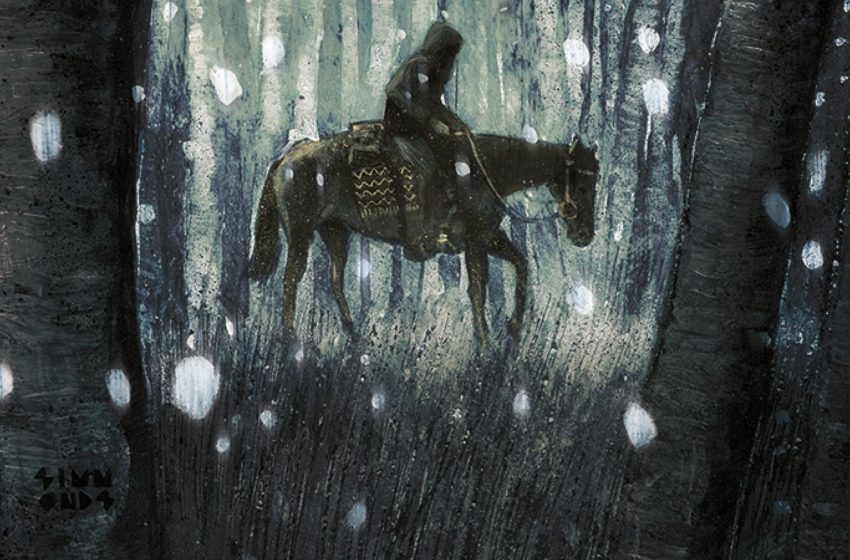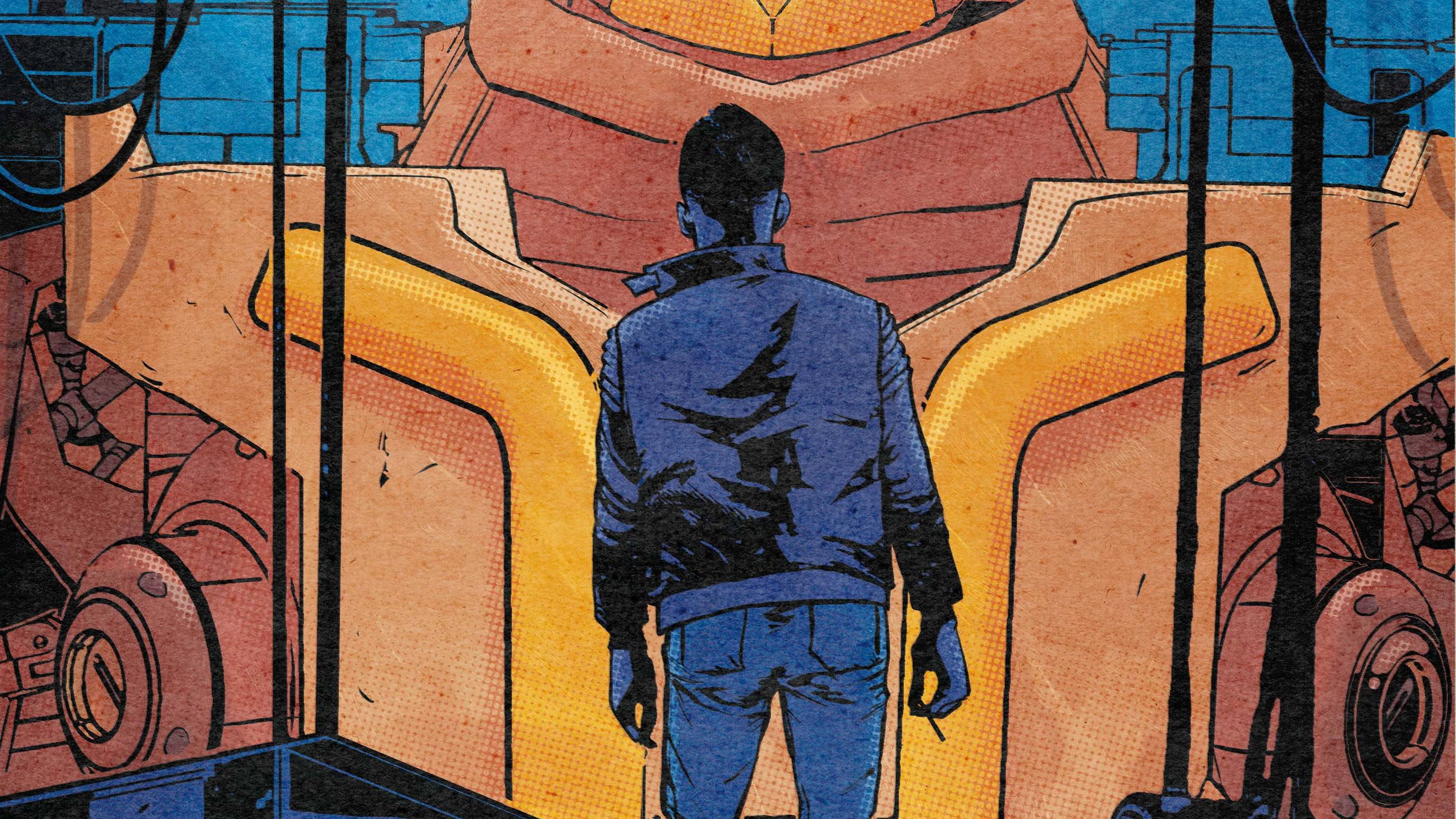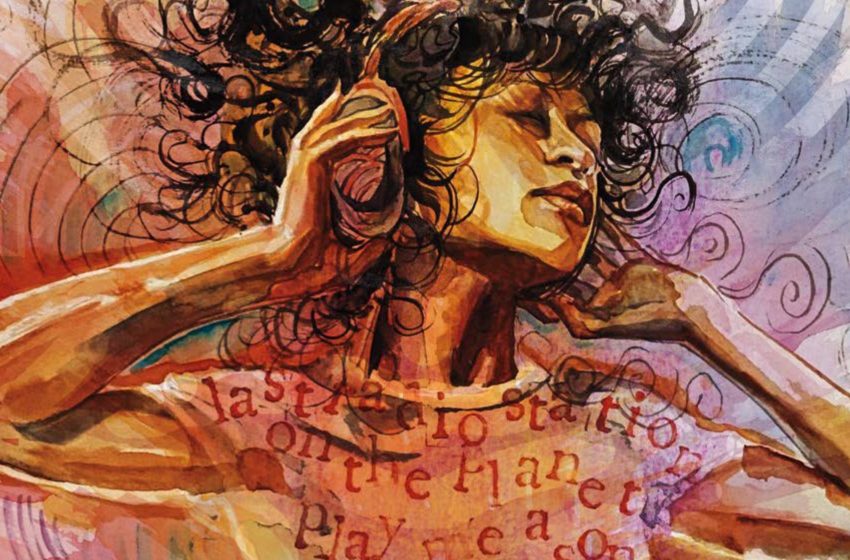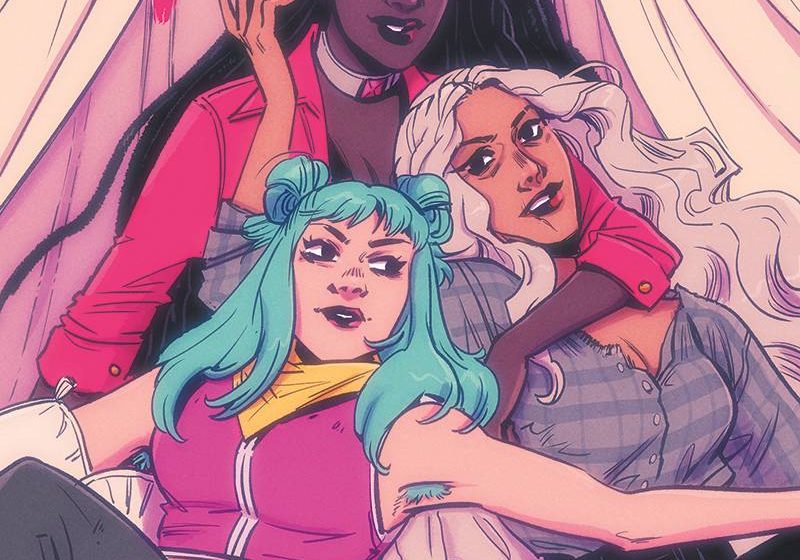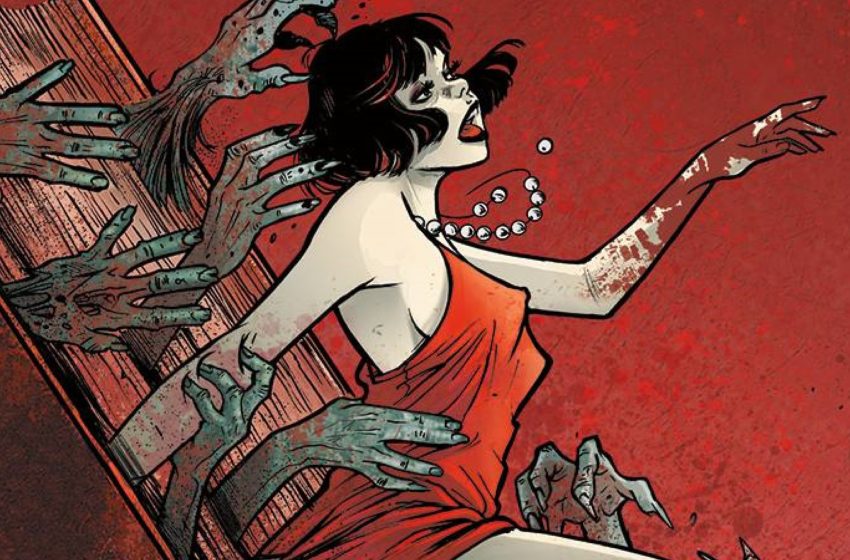1899, Yukon Territory. A frozen frontier, bloodied and bruised by the last great Gold Rush. But in the lawless wastes to the north, something whispers in the hindbrains of men, drawing them to a blighted valley, where giant spidertracks mark the snow and impossible guns roar in the night. To Brokehoof, where gold and blood are mined alike. Now, stumbling toward its haunted forests comes a woman gripped not by greed, but the snarling rage of a mother in search of her child. This Hungry Earth Reddens Under Snowclad Hills — THE RUSH — #1 is written by Si Spurrier, drawn by Nathan Gooden, colored by Addison Duke and lettered by Hassan Otsmane-Elhaou for Vault Comics.
Forrest Hollingsworth: Zack, they always say “yee haw” but never ask “haw yee?” Before we mine the depths of Spurrier and co.’s new gold rush horror story, haw yee feeling?
Zachary Jenkins: The syrin call of easy money out West inhabits my soul. It girds the depths of my loins. I need to escape this capitalist cycle, and the only way is to hold the capital. I must have the gold. Yourself?
Forrest: I started this bit about cowboys, and I’m now realizing The Rush’s setting, the early days of the Yukon gold rush (with some fantastical embellishment), is more akin to “frontiersmen” when we’re already too far in. Let’s move on.
Yukon Territory
Forrest: We’ll get to the story content in a minute, but I want to start our discussion by talking about THE RUSH’s setting as mentioned above. Set in 1899 Yukon Territory (that’s the region of western Canada between British Columbia and Alaska, the U.S.-Canadian border was established in 1818), THE RUSH starts its cast off deeply embedded in the Klondike Gold Rush, hence the name.
Spurrier said in an interview prior to the book’s release that the team has done intensive research on the era: “We’ve leaned delightedly into the slang and syntax of the era, we’ve referenced hundreds of photographs and firsthand accounts, we’ve borrowed lives and names and faces, all to build a truly faithful picture of this astonishing time and place.”
I think this is interesting in principle, especially because it places really significant limitations on communication, technology, travel, etc., that heighten a horror story, but in execution I noticed a number of things that undermine that general premise. Namely, our antagonist being a nameless, faceless, supernatural slasher literally riding a giant spider. It’s not dissimilar to something like Black Stars Above in that sense, in fairness, but I still find it a little … at odds with itself.
Zack, how do you feel about historical fiction or, uh, lack thereof? Am I being too hard on THE RUSH?
Zack: I came into this book with the entirety of my knowledge being the silhouetted cover of a man in a wide-brimmed hat riding a spider into the sunset. So needless to say, my expectations for hard historical fiction were a bit removed from yours. A great value of historical fiction is that the setting is complete, we understand it implicitly. For North Americans like you and I, the idea of “the rush” is embedded in our blood. This history has become our mythology. So to use it as a springboard into new, fantastical ideas? That makes much sense to me.
I see it in much the same way as I see a Big Two superhero comic with a strong authorial voice. The setting, the characters, the world and the tropes are all established beforehand. We know these things by the logo on the cover. They do the heavy lifting just as setting a story in the roaring ’20s does. It is, dare I say, a use of continuity to explain away details the author doesn’t want to bother with. If you go in with the expectations that it will be a fantastical take on history, it might just work for readers.
Forrest: As I said, I appreciate the attempt at it, and I think it may yet grow into its premise in more grounded (or interestingly elevated) ways, but the parts that felt most immediately tangible to me in its construction were the difficult syntax, letters in the midsection of the book, and the sepia tone. That’s all to say nothing of the lack of characters of color, a historically significant part of representation at the height of the gold rush that is overlooked here, thousands of Black Americans and Indigenous peoples were there.
There’s some distance between what the book thinks it is and what it is in actuality. Something to keep track of.
Zack: I am willing to give the creative team some leeway here because I have a feeling I know where they are taking this. The gold rush was the latest in a long list of colonial excuses to pillage land that did not belong to them. It was the 1849 equivalent of the legend of El Dorado. The consequences of that are seen only in the opening sequence of this issue. A boogie man in a bowler ’n’ tie, proudly coasting atop an eight-legged steed, will come and redden these snowclad hills and repatriate your ill-gotten gold. If the goal of Spurrier and Gooden is to damn the greedy, perhaps it’s wise to keep aim at the most guilty and melanin-deficient among us.
Paper Trail
Forrest: The majority of the first issue’s plot is delivered through diegetic correspondence. It’s unclear whether any of these letters has actually been received by their recipient, teenage Caleb Bridgers, or if our main character, Mrs. Bridgers, his mom, has been holding onto them for one textbook-length missive. Either way, we got letters, and with letters, we got lettering.
I have to say, for my part, that I don’t mind this kind of intensive scene setting so long as it’s intelligible, and it is here. Otsmane-Elhaou does a great job of imbuing Mrs. Bridgers’ writing with character, and the script typesetting rides that line between legible and authentic without being too laborious. I think this is especially important in comparison to something like Department of Truth’s increasingly dense prose sections, which have a few too many lettering, art and narrative elements going on at once.
Zack, what do you make of the scene where Bridgers says sometimes it feels like she’s writing nothing at all only to wake to a blank piece of parchment in her hand?
Zack: Writing forces one to be very precise about that which they want to communicate. You must select from synonyms and turns of phrase, the exact alchemy that will result in your message being received. In some cases, in more cases than any of us want to believe, that recipient is the writer themself. The simple act of putting pen to paper forces a writer to reckon with the weight and truth of their words. You cannot erase ink.
As for the use of epistolic text in this issue? It felt more like an exposition dump than an examination of the writer. I learned more about Mrs. Bridgers from her terse interactions with Mr. Thyme than from her letter to her son.
Forrest: Hold on, I have to look some words up.
OK, yeah, I get what you’re saying. Either through the letter or in her actions after, I do think Spurrier is trying to get Mrs. Bridgers a lot of character work in a short time here. Writing a letter to her son, bargaining and besting sexist men to get what she wants, suggestions of wealth or maybe of just putting on airs. Some of it may be contradictory, but that may also be the point.
Either way, I’ll confess that I’m more immediately curious how it will inform the departed son, Caleb. I imagine no small part of the story to come will be uncovering exactly what happened to Caleb, and setting up his mother’s opinion of him and of his father is a good way to do that in contrast to whatever the truth will be.
Welcome to Brokehoof
Forrest: Last but certainly not least is the narrative and actual journey that takes place here from the vagueness of Yukon Territory to Brokehoof proper, a scrappy mining settlement on the edge of mystery which I imagine will be our main set piece. I love the look of the thing, a meager community set in a massive crater, unaware of the scale of things all around them in parallel to the supernatural nature of the antagonist setting its sights on humans that can barely handle the cold, unforgiving environment of the Yukon itself.
I found the culmination of the issue, a brief but terrifying encounter with the nameless rider, to be really satisfying. If the creative team is really as interested in scene setting as they say they are, the moment where an off-panel character’s dialogue is rendered as a blank speech bubble to a visibly rattled Bridgers is arguably a better way to do that than sepia tones. To wit, when you take these elements with the book’s evocative title — the idea of a red, wrong earth right below them — it really transcends the whole scene. This is where Duke and Gooden’s work is the most synergistic.
Zack: I’m intrigued by the setting for our tale. A crater in the Yukon, desolation inside desolation. I do however wish that we got to it a bit quicker. We learn that Caleb Bridgers, the lost son, is dead. Or he is claimed to be dead at whatever rate; comics have spoiled my trust in the potency of the reaper. And to me, this anti-climax sours whatever the book was building toward. “Welcome to Brokehoof, I guess,” the book half-heartedly exclaims as our rider looks on at his dejected and broken prey. Sadly, I can’t help but feel the same way.
There’s a lot to like here. Spurrier’s dialogue is sharp as ever. Gooden and Duke are working well with some evocative designs and sequences. Hell, the inner 2000s emo kid in me loves the overly long and poetic acronym title. But as a first issue, this didn’t come together in the way I needed it to. I believe this story can come around, but it’s got a long and lonely road to get there.
Forrest: For what it’s worth, I found the blank parchment and the bookending with the rider encounters intriguing because I’m a sucker for people experiencing the effect of something supernatural before they’re aware of its physical (or liminal, or whatever) reality. The idea that Caleb’s fate has already set Mrs. Bridgers down an inexplicable path gives the narrative some room to grow in interesting ways, which is really what you’re looking for in any #1. Time will tell if that’s a worthwhile journey, but I’m willing to stick around a little longer to find out — there may be gold in them hills!
Yee Haw.

